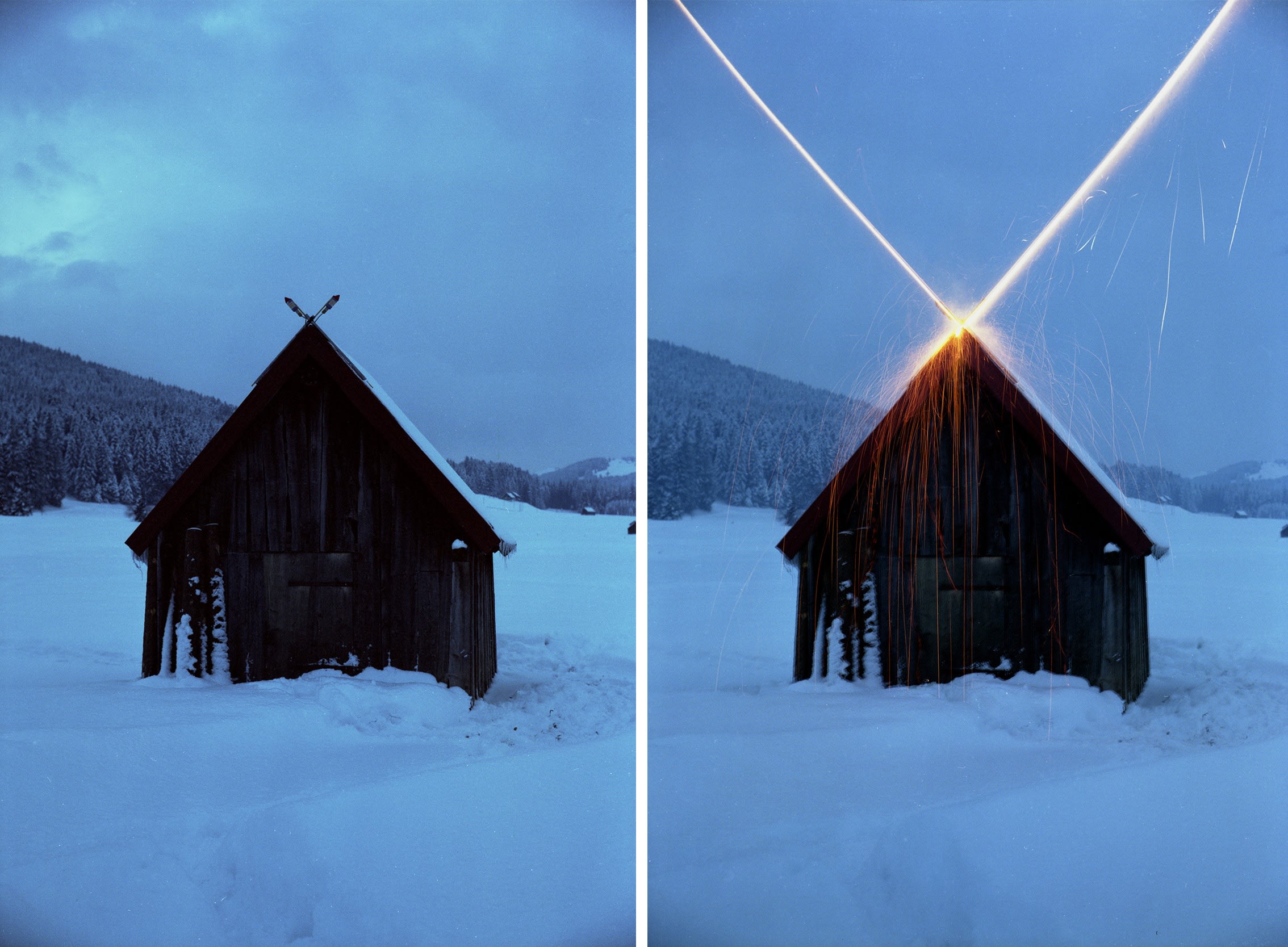Dorian FitzGerald (*1975, Toronto) makes monumental paintings of materially excessive situations. The subject matter includes the dining room of Stefano Gabbana’s yacht; the throne room of the Queluz National Palace in Lisbon; table decorations for a party thrown by Oprah Winfrey for Sidney Poitier; a Fabergé Egg ornamented by a rose trellis; a Cartier bracelet and, most recently, an image of Elton John’s sunglasses collection at his estate in Old Windsor, England. Each of the paintings has been made using acrylic paint and caulking in a slow, precise method that FitzGerald has refined in his studio over several years, although the total number of paintings made in this manner is less than fifteen, given their scale and complexity. The process involves researching suitable imagery, manipulating it with software, making a large-scale acetate transfer onto canvas and then using clear caulking to delineate areas of pure colour so that the image is built up slowly in a manner that resembles a kind of pointillism filtered into vector graphics. FitzGerald’s largest painting to date, “The Hacker-Pschorr Beerhall, Oktoberfest, Munich” (2005), at twelve feet wide by eighteen feet high, took the artist more than three years to complete. Of his work and his process, the artist has written that “the images that interest me are symmetrically organized, complex masses of objects that assume fractal-like forms. These opulent interiors and luxury objects not only benefit from the rich texture and application of paint, they also closely align with my socio-political interests. I see myself as a contemporary court painter, documenting on a grand scale the material and spatial excesses of our time.”
Canadian, b. 1975
Connect with us.

Keep abreast of new exhibitions and other news.
* denotes required fields
We will process the personal data you have supplied in accordance with our privacy policy (available on request). You can unsubscribe or change your preferences at any time by clicking the link in our emails.
